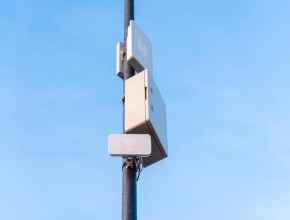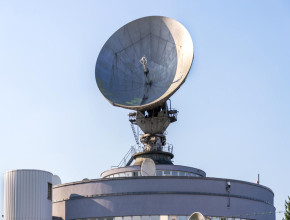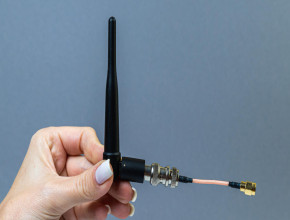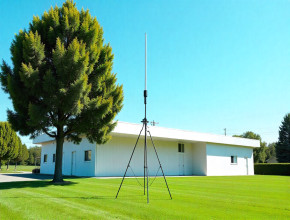
Have you ever wondered about the technology behind mobile phones, televisions, radios, routers, etc.?
Wireless antennas play a vital role in this digital world. Even so, we can go to the extent of saying that we cannot imagine many technologies without having different dishes in our lives.
From telecommunication, broadcasting, radar stems, and wireless networking, wireless antennas are the most essential components for contemporary solutions.
If you are curious to explore the different types of wireless antennas used in various applications, you have landed in the right place, as we are going to discover them in this guide. Let’s get started!
What is a Wireless Antenna?
A wireless antenna is an instrument that helps in transmitting and receiving electromagnetic signals. With the help of these transponders, one can instantly share information over vast distances. These transceivers convert electrical signals into electromagnetic waves so that they can easily transmit and receive a range of radio frequencies.
Wireless communication solutions are crucial components in different industries. In aviation, marine operations, the military, education, health care, etc., these wireless transponders are used for a multitude of purposes.
The reasons that make these devices so versatile and flexible are their different shapes, sizes, features, and types. In the next section, let’s become familiar with the popular wireless solutions that we use in different industries.
Types of Wireless Antenna
Wireless antennas are essential in many operations. You can employ them based on your requirements and the characteristics that you want them to have. You can select a high-directional radiator, an omnidirectional one, or prioritize other features.
Here, we have covered the most well-known types of wireless antennas:
A. Omni Directional Antennas
This is a class of transceivers that are specialized in communicating with radio frequencies in multiple directions. In other words, we can say that these Wi-Fi antennas can receive or transmit signals equally from all directions. This quality of receiver is also known as the 360-degree radiation pattern.
These transponders are suitable for applications where holistic coverage is a paramount concern. Mostly, Omni directional antennas are used in wifi routers, cellular base stations, communication systems, and much more. These possess low gain capability and are effective in making communication in every direction.
These are some well known omni directional antennas:
1) TV Antennas
This is a very common type of transceiver that you can use to access local channels on your television. It is a very simple, compact, and cost-effective solution.
It helps in receiving broadcast television signals over the air. It is made with the help of conductive elements that assist in capturing electromagnetic waves which come from broadcasting stations.
2) Dipole Antennas
This is a kind of RF receiver that can be identified by its parallel rods or wires, which are separated by a small gap. Dipole sensors are known for their balanced radiation patterns. That means it can radiate electromagnetic energy equally in all possible directions. It comes in different types, such as half-wave dipole receivers, folded dipole receivers, etc.
These transmitters are simple and easy to construct. Dipole Antenna is used in many applications, from radio communication to short-wave communication. These are also cost-effective and multifunctional in nature.
3) Whip Antennas
These are very straightforward antennas that are designed with a pliable metal rod or wire. Whip Antennas are simplicity and vertical size make it a better option in different applications, especially in radio communication.
These omnidirectional radiators are a better option for limited space. You can see these transponders integrated in cars, handheld radios, trucks, and even aircraft.
4) GPS Antennas
GPS antennas are devices that are helpful in receiving and expanding signals that come from GPS (Global Positioning System). Basically, GPS is a set of satellites that orbit the earth.
These receivers can be integrated into many vehicles where they help to determine accurate position, location, and navigation. Cars, trucks, bikes, aircraft, etc. are the vehicles where these dishes can be installed.
5) Radio Antennas
These antennas are dedicated sensors for transmitting and receiving signals at a range of radio frequencies. It comes in different shapes, sizes, and configurations, which make them effective for different applications.
These probes are omnidirectional and equally directional in nature. It helps in many two-way communications, wireless networking, radar systems, etc.
B. Semi Directional Antennas
These antennas are capable of communicating with a single point. Unlike omnidirectional ones, these radiators can be used to radiate signals at a single point. However, you can also customize it for both the omnidirectional and directional patterns.
These transceivers are effective for both indoor and outdoor purposes. There are huge types of semi-directional reflectors. And the primary property of them is that they can facilitate both omnidirectional and directional antennas. These are used in many applications, such as military surveillance, aviation, wireless LANs, security systems, etc.
1) Patch Antennas
It is rectangular, flat, and has a compact design. These radiators are also known as panel antennas because of their straight-forward design.
These transceivers come with a simple and easy design that makes them easy to integrate. They have a low profile, which makes them a suitable device to use as directional radiators in different applications.
2) Log-Periodic Antennas
It is used for commuting over a wide range of frequencies. It is made up of a series of dipole or folded dipole elements. Log periodic antenna has a wide frequency and is commonly used in applications like television reception, radio communication, and more.
C. Highly Directional Antennas
These wireless devices are very effective for radiating and transmitting signals over long distances. These have a directional nature, which means you can use them for radiating signals in a particular direction.
Directional Antennas are high-gain, focused, and mainly used for outdoor purposes. Defense, aviation, surveillance, space missions, astronomy, etc. are its common applications.
Highly Directional Antennas are two types:
1) Parabolic Dishes
It is also known as a dish antenna because of its large parabolic reflector, which gives it a dish-like structure. It is made up with the help of a reflector, feed antenna, and mount that collectively work and creates a seamless transmission of information.
It comes with a simple and compact design. And holds primarily attributes like high-gain directional nature, covers wide frequencies, and helps in different missions.
2) Grid antenna
It is also known as a parabolic grid reflector. It is directional in nature and is commonly used in point-to-point communication. It possesses qualities like high gain and covers a long distance due to its narrow band width and high gain directional nature.
Conclusion
As we understand the diverse types of wireless communicators, we also understand the many types of antennas. Every type of radiator holds its own unique value and is used for different purposes. These wireless communication solutions help us share information over vast distances, even in harsh environments. They are reliable, trustworthy, and provide a seamless flow of data through electromagnetic radiation. Because of these wireless communicators, we can not only share information but also identify potential threats, detect objects from long distances, and explore weather patterns, space, etc.





